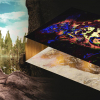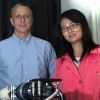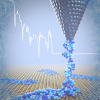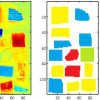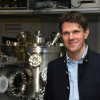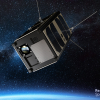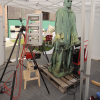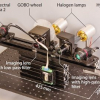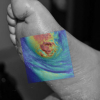Imaging News
X-ray imaging reveal an extinct mouse had brown to reddish fur on its back and sides and had a tiny white tummy.
Researchers at Rice University have developed a new compact, fibre-based imaging spectrometer for remote sensing that can capture 30,000 sampling points each containing more than 60 wavelengths.
The winner of the 2019 Tomas Hirschfeld Award is José Manuel Amigo Rubio. José obtained his PhD (Cum Laude) in Chemistry from the Autonomous University of Barcelona, Spain. Since 2007, he has been employed at the Department of Food Science of the University of Copenhagen, Denmark, and also as Guest Professor of the Federal University of Pernambuco, Brazil, since 2017. José’s research interests include NIR hyperspectral and multispectral image analysis in different research fields including food production, pharmaceutical research, forensic sciences.
The ABS Trust is seeking applications for the Gordon F. Kirkbright bursary award and the new Edward Steers bursary, both open to early career scientists.
2D laser-induced breakdown spectroscopy imaging of shell growth rings is revealing previously hidden data of marine climate change.
Physicists from the University of Basel have developed a new method to examine the elasticity and binding properties of DNA molecules on a surface at extremely low temperatures. With a combination of cryo-force spectroscopy and computer simulations, they were able to show that DNA molecules behave like a chain of small coil springs.
Plastics recycling is complicated by the need to recycle similar plastics together. The presence of flame retardants in plastics also needs to be identified, and NIR hyperspectral imaging can do this.
Matthias Kling is to head a new research group in Ultrafast X-Ray Imaging and Spectroscopy in the Laboratory for Attosecond Physics at the Max Planck Institute of Quantum Optics.
Headwall Photonics has appointed Christian Felsheim as Business Development and OEM Account Manager for the European region.
A Finnish nanosatellite has now reached space equipped with the world’s smallest infrared hyperspectral camera and returned its first images.
Stemmer Imaging has expanded its portfolio and acquired a stake in Perception Park GmbH, the Austrian provider of the Perception System & Studio data processing platform.
Outdoor bronze statues suffer from corrosion by the urban atmosphere. Short wavelength infrared hyperspectral imaging can determine the spatial distribution of corrosion products on the statue, none of which can be recognised by visual observation.
Keynote speakers have been announced for HSI 2018, the 7th international conference on Hyperspectral Imaging & Applications, co-located with Photonex Europe taking place on 10 and 11 October at the Ricoh Arena, Coventry, UK.
Hyperspectral imaging can detect weak from strong hardened concrete and normally fired bricks.
Machine learning techniques using a combination of the layer clustering and decision tree methods aids prediction of spectra.
New hyperspectral camera system can capture 3D images, time and spectral information.
A rare mineral that holds potential as a new material for industrial and medical applications has been discovered on alpine plants by Raman microscopy.
Multispectral imaging technology which could enable more targeted observation of environmental conditions on Earth is being developed in research led at the University of Strathclyde.
Waters acquires exclusive rights to desorption electrospray ionisation (DESI) technology for all mass spectrometry applications from Prosolia and PRF.
Hyperspectral imaging is being used to image wounds and could provide more information to support wound care in people with leg wounds.

